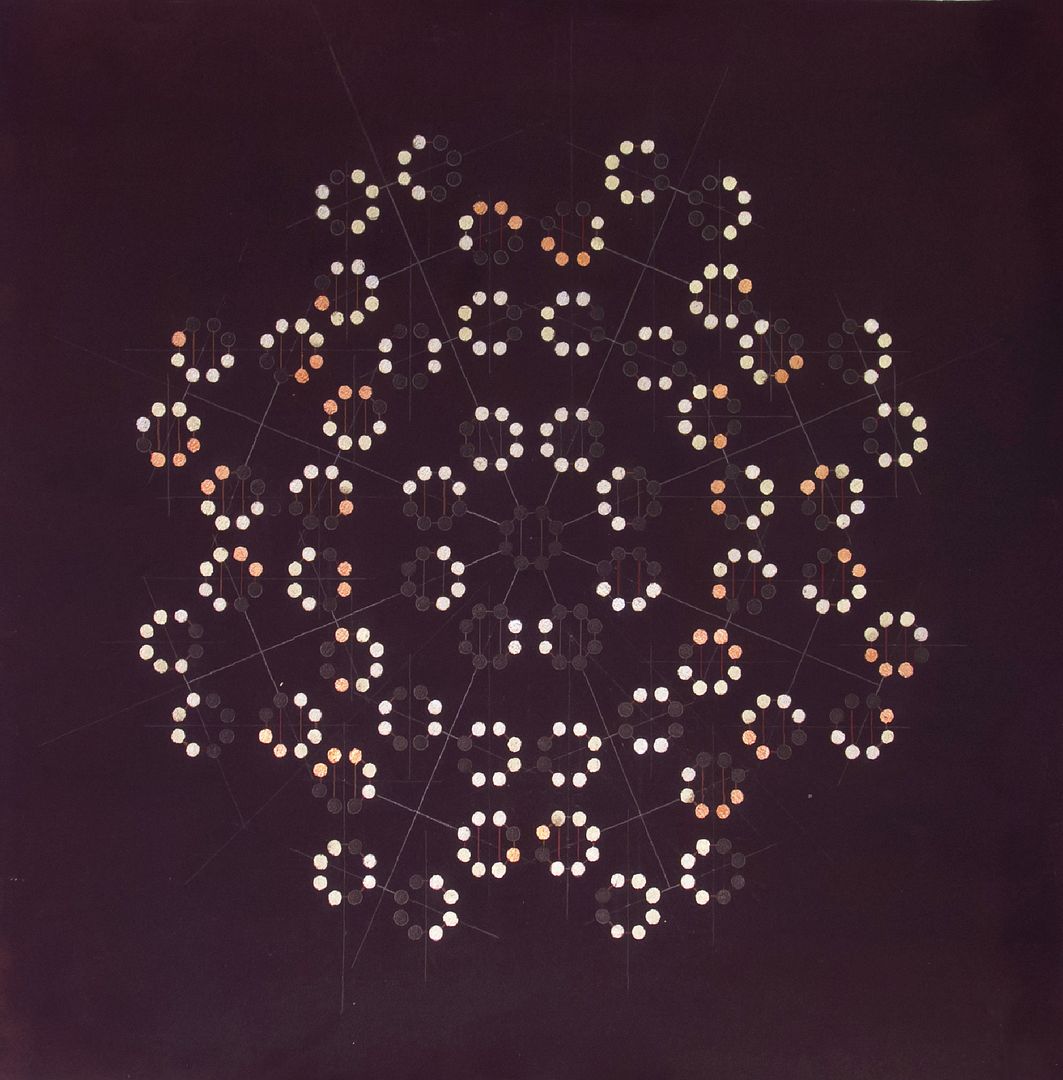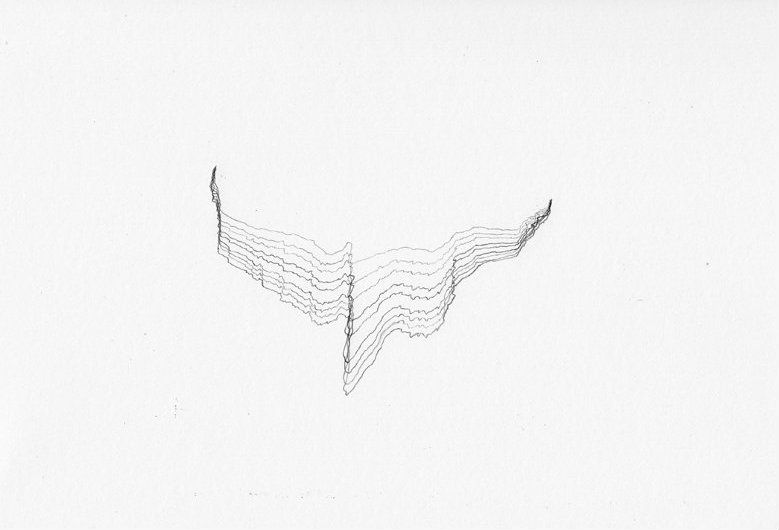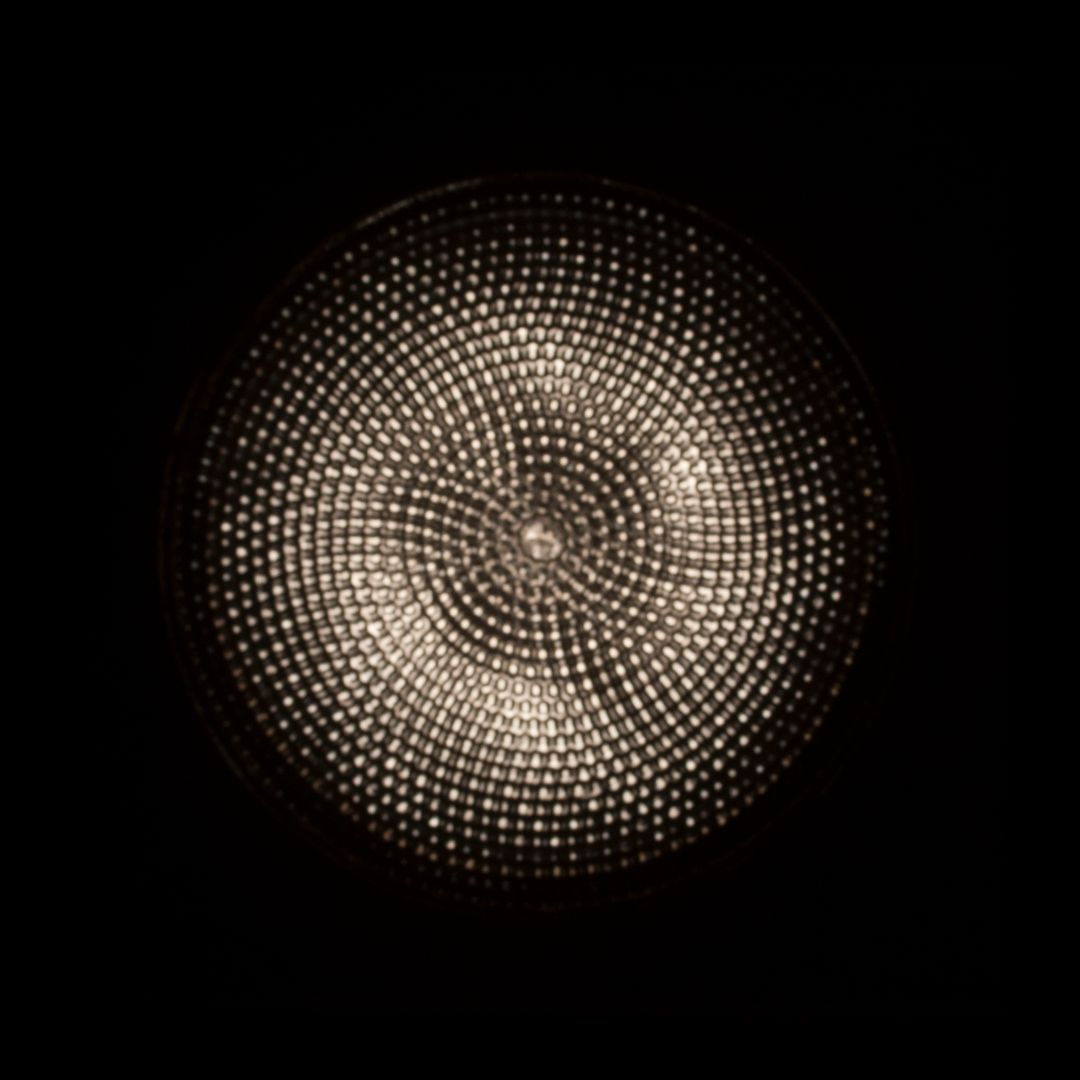 |
| Owen Schuh "Two Folds" 2012 Graphite, gold copper and silver leaf, and sumi ink on paper 32 x 32 inches |
+++++
"Uncharted," a handsome group show of works on paper at Cain Schulte Gallery, "explore[s] the concept of mapping as the visual and conceptual categorization and organization of relationships, systems, and interactions." Remarkably, the works included in "Uncharted" all relate well to one another (rare for a group show with such a broad theme), and the exhibition is compelling both visually and conceptually, but a few artists' contributions stand out.
Owen Schuh's "Two Folds" is an elegant diagram illustrating all of the possible ways a piece of paper can be folded in two. Schuh is a precise craftsman, and his circles and lines add up to a kind of mathematical sublime. Without the aid of the press release, I wouldn't have recognized what it is that Schuh has mapped, but that isn't necessarily a problem. "Two Folds" also works as an arcane design, calling to mind the complicated but specific hierarchies of, say, a Kabbalist. That Schuh has produced an image that is as readily associated with mathematics as it is esoteric mysticism shouldn't surprise; just ask your neighborhood theoretical astrophysicist to discuss notions of beauty.
 |
| Amber Stucke "Survival Relationships No. 2 (Symbiosis State)" 2011 Graphite, gouache, and ink on stonehenge paper 50 x 38 inches |
Katie Holten's shadow drawing series is less visually exciting than the aforementioned works by Schuh or Stucke, but her small pictures, artifacts of her mapping the movement of shadows in a given space, are restrained reminders of the value of taking note of that which typically goes unnoticed.
 |
| Katie Holten "Shadow Drawing" 2012 Graphite on paper 9 x 12 inches |
A block south, at the Fraenkel Gallery, works by another perceptive observer of the everyday are on view. The title of Charles Burchfield's "White Picket Fence" evokes bourgeois banality, but the striking picture makes it plain that Burchfield was a modern mystic, an artist who saw (or recognized) the extraordinary in the mundane.
 |
| Charles Burchfield "White Picket Fence" c. 1965 Watercolor, chalk, and charcoal on joined paper 53 x 40 inches |
 |
| Charles Burchfield "Heat Lightning (Landscape with Grey Clouds)" c. 1962 Watercolor, charcoal, and white chalk on joined paper 58 x 45 inches |
Critic Jerry Saltz described Burchfield as "the mystic, cryptic painter of transcendental landscapes," but it's important to remember that, like his American transcendentalist predecessors, Burchfield's work is merely an enthusiastic response to the world as it is; mystics are not lunatics.
 |
| Chris Fraser “Eidolon, Sylvania 120PAR/CAP/SPL/FL30, 2012” 2012 Light Installation Exterior View |
Fraser's background in photography led him to work with light as a primary medium. All of the artist's recent projects play with our perception of light's movement through space; in the process, Fraser, makes the ethereal almost tangible. "Eidolon, Sylvania 120PAR/CAP/SPL/FL30, 2012," the strongest work in "Eidolons," is also among the most beautiful of Fraser's pieces to date. Fraser's artwork titles ground his project in the mundane (the letters and numbers are the manufacturer code information associated with the bulbs Fraser uses), but by directing the bulb's illumination through a tiny hole in a wall (and into an otherwise unlit room), Fraser focuses our attention on the astonishingly intricate pattern cast by the ordinary flood light. The effect is transformative.
Alone in the dark interior space with the floating impression of the bulb's face projected in front of me, I move between scales, alternately considering the subtly pulsing pattern in front of me as a particle accelerator collision, a sunflower's floret pattern, and a representation of the cosmos. Highlight Gallery's press release defines an eidolon as "a phantom or an image of the ideal." In combination, those two things -- a phantom and the ideal -- flow into the notion of the numinous, and I believe that is Fraser's aim, to provide his viewers with experiences that might open them to awe.
 |
| Chris Fraser “Eidolon, Sylvania 120PAR/CAP/SPL/FL30, 2012” 2012 Light Installation Interior View |
Image credits: Owen Schuh, Amber Stucke, and Katie Holten images, courtesy the artists and Cain Schulte Gallery; Charles Burchfield images, courtesy the Fraenkel Gallery; Chris Fraser images, courtesy the artist and Highlight Gallery

No comments:
Post a Comment